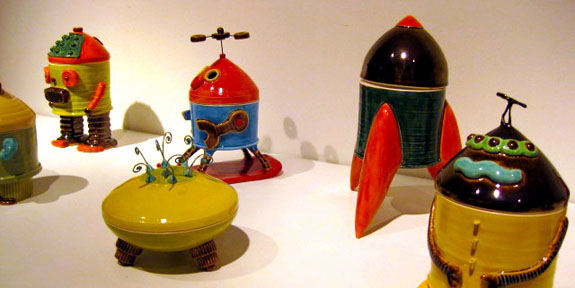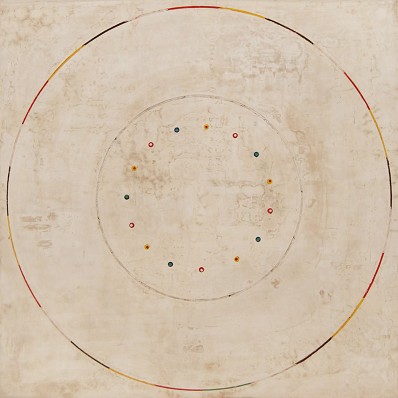
At the Galleries: Santa Fe
Graphite is what pencil leads are made of. Soft, opaque and dense (and electrically conductive), it is a polymorph of carbon, malleable into sculpture, as well as into the elliptical curves and straight lines of the written sentence. Like British sculptor Antony Gormley, Susan York is a meticulous craftsman of her art. York, who speaks tonight at Santa Fe Art Institute, is currently showing graphite drawings (along with one small graphite sculpture, high on the south gallery wall) at James Kelly Contemporary. The new drawings exude kinesthetics, reminding me of Gormley saying: “Sometimes I do get surprised that something Ive made, that is so cold in a way, can nevertheless be touching. Because the certainties that I try to work with, are hard facts.”

Susan York and Wes Mills, Graphite on Paper, James Kelly Contemporary, Santa Fe, NM
Yorks work shares the Kelly space this month and next with graphite drawings by Wes Mills – now of Montana, formerly of Taos. Mills burst onto the scene in the mid 1990s, praised for his command of point and line, which he most frequently executed as a delicate mark, buoyant and ineffable in a white plane. Now Mills is working serially. To encounter his work next to Yorks is to experience the choreography of restlessness with an optics of displacement, wherein the viewers body is always made somewhat anxious by the marks smudginess and illusion of traveling. In other words, what sits as graphite laid down on paper is never really still. Even as a mark holds the inertia of precision it transmits a more effusive if transient materiality. Like something that could be erased if you leaned into it. That will only reflect you if sheeted by glass. (left: York; right: York drawing.)
New ceramics at Robert Nichols Gallery tend to grab interesting turf — whether Brian Molanphy porcelain and stoneware, or now a set of amusing glazed “robots,” (see top photo) with moving parts, by Elizabeth Hunt, who teaches at Santa Fe Community College. Nichols has begun to use the back room of his space to display installation ceramics, a concept which he invites his artists to interpret liberally. As the dealer invites artists to take the craft impulse out into its companion of the multiple, admirers of clay begin to cluster around the shows as if seeing craft as new.

Kris Cox "Concentric Episode Series, Bone", 2002
Painter Kris Cox (above) of Basalt, Colorado, has a new show of paintings at LewAllen Contemporary on Palace Avenue. These “site” works use beeswax, which the artist pours as a mold into a picture plane slightly recessed from its surround of a pigmented wood frame. The artist has referred to these abstract works as “maps,” or evidence of “hunting,” in that he often embeds objects from place (such as his travels in Africa) as cues to memory and archetypal referents that derail investigations into the personal. A cogent impression of the hand shaping and encoding material experience is evident in this work shown for the first time in Santa Fe.
Openings on November 6:
Elizabeth Hunt at Robert Nichols Gallery
Susan York and Wes Mills at James Kelly Contemporary
Kris Cox at LewAllen Contemporary.
